Of all Earth’s ecosystems few, if any, are richer or more diverse than those built on coral reefs. While corals occupy only about one percent of the sea floor, they sustain something like a quarter of all sea life.
But in the last half century the world’s corals have been dying off. In the Caribbean and western Atlantic, for instance, staghorn and elkhorn corals are down 80 to 90 percent. Now both species are listed by the International Union for Conservation of Nature as critically endangered.
A decade ago there was debate about which major stressor was most responsible for global coral decline. Some researchers suggested it might be storms, still others went with rising sea temperatures, reef bleaching, ocean acidification or disease.
“Now we realize these are all caused by CO2 pollution,” says Dr. David Vaughan who directs coral-reef restoration for the Mote Tropical Research Laboratory at Summerland Key, Florida.
When a reef is weakened by storm damage, acidification, or warm water (which bleaches it by causing it to expel the symbiotic microalgae that colors and nourishes it), it becomes susceptible to disease. Diseases can cause coral tissue to slough off, exposing the limestone skeleton — a prime base for encrusting invertebrates and large, smothering algae.
There are other stressors, too, including nearshore pollution, oil spills, oil dispersants, anchor damage, coral collection, fish collection with explosives and cyanide, and overfishing of herbivorous fishes.
Herbivores like parrotfish and surgeonfish in the Atlantic and rabbitfish in the Pacific are essential for coral-reef health. They graze on the large alga species that block sunlight and consume oxygen that reefs need for respiration.
Few nations protect these fish. “In many developing countries people are so poor they are eating down the food chains,” says Dr. Luis Solórzano, Executive Director of The Nature Conservancy’s Caribbean Division. “Now they’re down to parrotfish.” The challenge, he points out, is to educate such nations to the fact that healthy reefs would provide them far more and far better-eating fish.
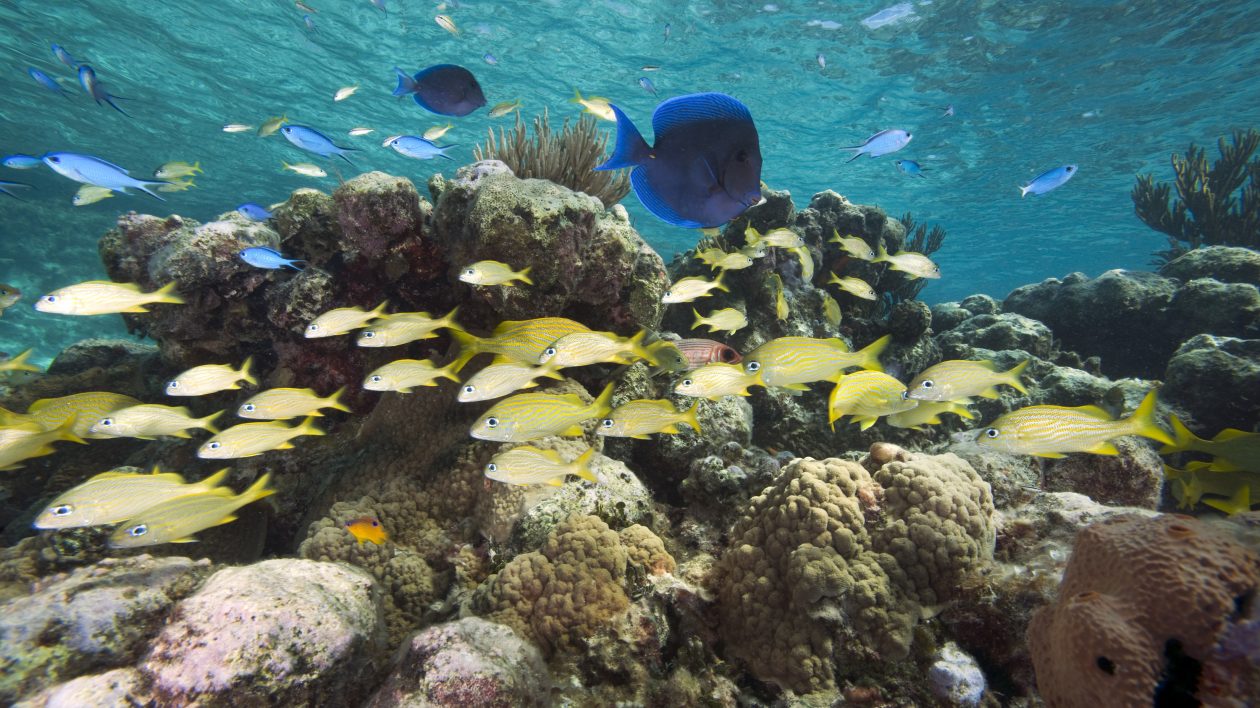
From 2002 to 2009 Belize experienced a 41-percent decline in parrotfish from overfishing. In one study a reef went from 75 percent coral cover to about 20 percent because of algae over-growth.
So in 2009 Belize banned the taking of parrotfish and surgeonfish. (Few people eat the latter species because they’re small and scrawny.)
And in October 2018 Mexico protected ten species of parrotfish.
A ban on harvest of three species of parrotfish in the Virgin Islands appears to have produced recovery of these once-overfished stocks.
Another important grazer of coral-killing algae is the long-spined sea urchin. Until 1983 it was the most common sea urchin in the Caribbean. Then an unknown disease of unknown origin killed at least 95 percent of them. As a result, coral reefs and the ecosystems they supported declined.
Recovery of long-spined sea urchins has been slow. “In the seventies I saw them all over the sea floor,” says David Gross, The Nature Conservancy’s coral biologist for the Virgin Islands. “Now they’re spotty.”
“Still, the essential problem is climate change,” declares Dr. Mark Eakin who coordinates Coral Reef Watch for NOAA. “From 2014 to 2017 we had a global coral bleaching event. It’s only the third. The others, in 1998 and 2010, lasted a year. The last event weakened or killed 75 percent of the world’s corals.”
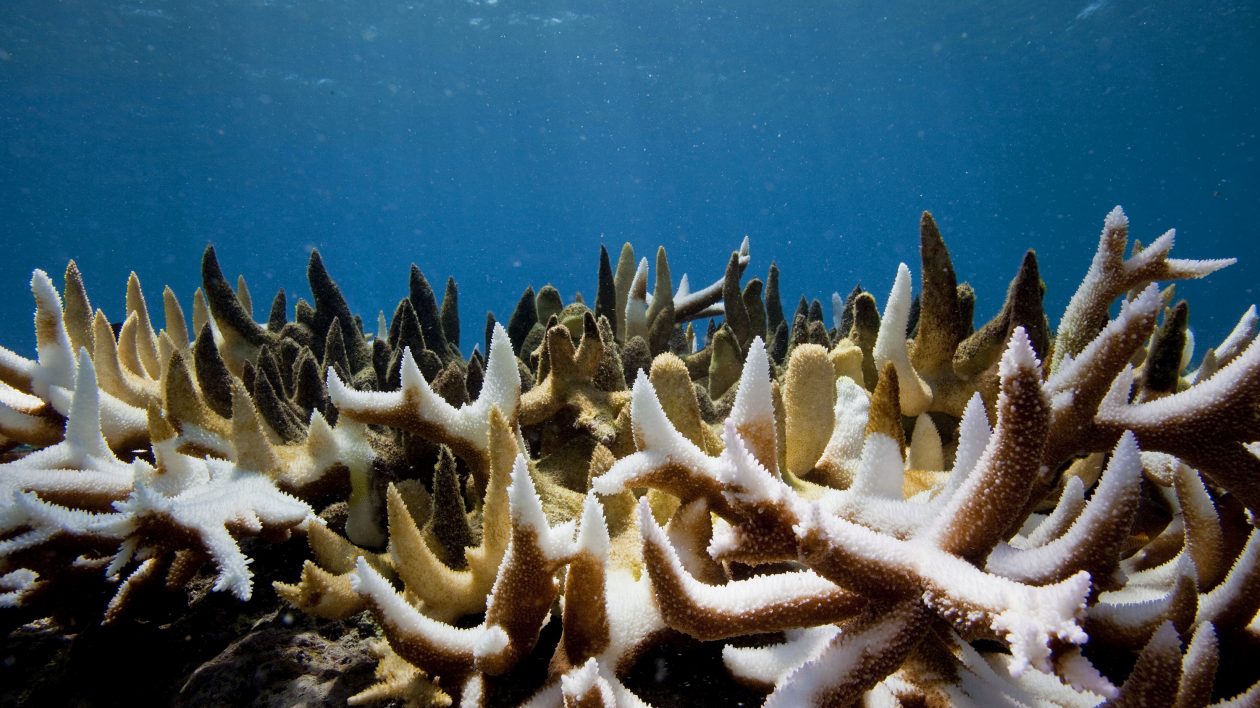
The “Eureka Accident”
There’s new hope, however. A decade ago Vaughan made a mistake that would radically transform coral-reef recovery around the globe. An elkhorn coral had attached itself to the bottom of a Mote lab tank. When he pulled it off it shattered into tiny pieces. He had killed it, he thought.
But within several weeks each fragment had grown to a size that would have taken two years to attain in the wild. Vaughan tried chopping up all corals native to Florida and got the same result.
“After my ‘Eureka accident’ I knew we could restore reefs,” he says. “It used to take us six years to produce 600 corals. Now with ‘microfragmentation’ [cutting a coral into tiny pieces] we can produce 600 corals in an afternoon. We are producing more corals faster than we can get new tanks to put them in. And crews are planting them in the wild as fast as we’re growing them.”
Corals the size of a small car can be 200 to 500 years old. Outplanted microfragments from the same source colony will fuse together, attaining that size in two or three years.
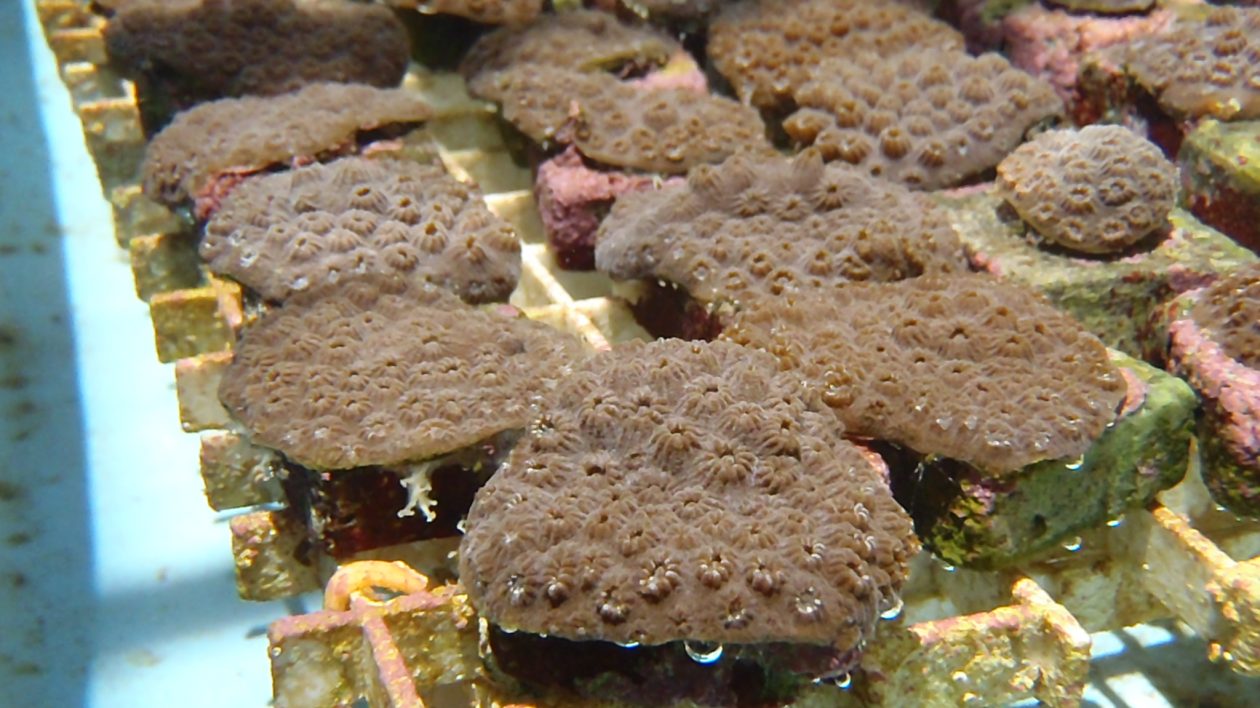
Now Mote is helping other countries with this technique. When I interviewed Vaughan on October 27, 2018 he had returned the day before from Mexico where he was teaching microfragmenting, and he was leaving on the 28th to teach it at Saint Martin. The following week he was off to the Dominican Republic. He’s also working with coral managers in Belize, Costa Rica and Barbados.
The discovery of microfragmenting inspired Mote to build a $7 million, 20,000-square-foot coral-recovery facility at Summerland Key, completed a year ago. The lab is culturing 40,000 coral colonies representing 28 species, and the classroom facilities can accommodate scientists from around the globe.
The Nature Conservancy (TNC) has been a major Mote partner. “Coral restoration does not have a sellable product,” says Vaughan. “If we were growing clams or oysters or shrimp, we’d have people standing in line to pay for them. We have something that doesn’t have a price tag but is priceless. We’re putting it into countries, the most important ones of which are smaller island nations that probably don’t have enough funding to step up to the plate. If it weren’t for philanthropic nonprofits like TNC, we’d be nowhere.”

Fragments of Opportunity
The Nature Conservancy, with Caribbean offices as far south as Grenada and as far north as The Bahamas, is leading coral recovery in that region. This from NOAA’s Eakin: “TNC has been at the forefront of activities for developing coral nurseries, doing pioneering work in reef resilience and educating coral managers around the world.”
One way TNC and its partners build resilience is to harvest and culture bits of fast-growing species like staghorns and elkhorns that manage to survive disease and/or bleaching. These hardy, super-adapted “fragments of opportunity” are then grown on “trees” anchored to the sea floor and held erect by buoys. Managers break off pieces and outplant them by nailing or epoxying them to appropriate bottom sites. It’s natural selection played at fast forward.
At the Virgin Island of St. Croix, where TNC has some 30 trees growing 1,500 staghorns, the organization will have completed a land-based coral-nursery lab by next spring; and it will construct similar labs in the Dominican Republic and on Eleuthera in The Bahamas.
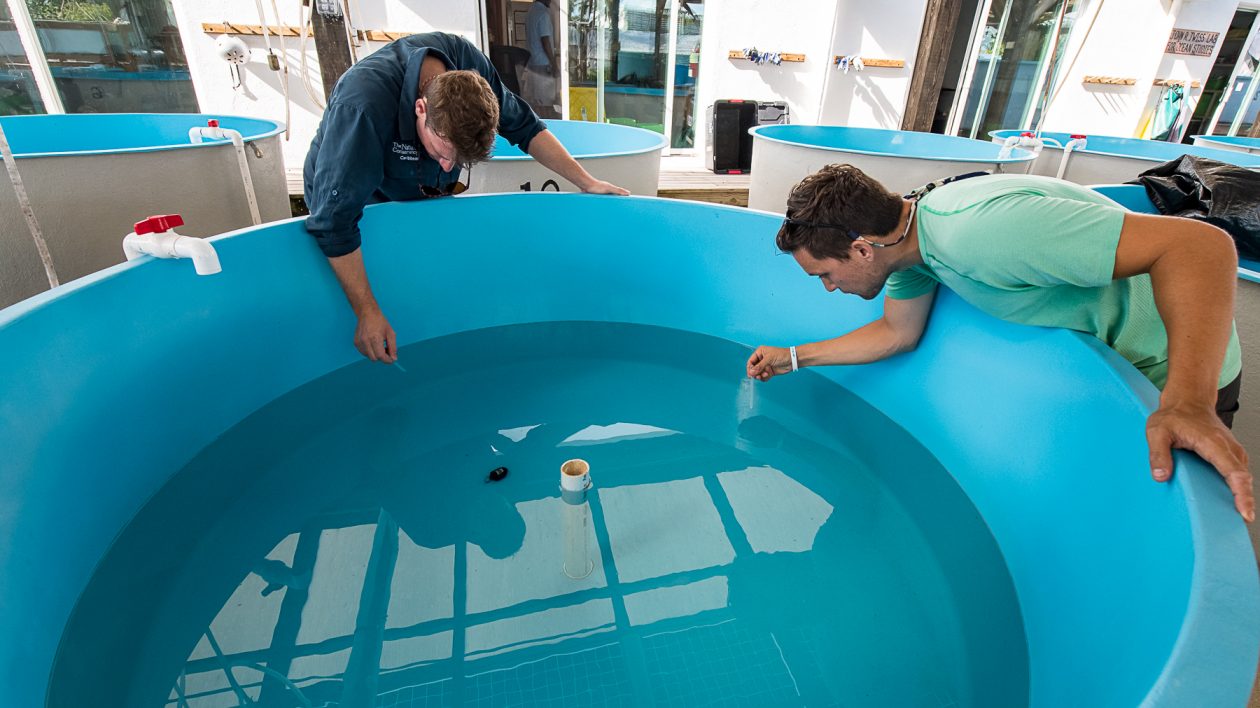
“With our St. Croix lab we’ll be able to grow about 15,000 microfrags every six months,” says Gross. “We’ll have a lot more capacity than we have with our traditional trees. And we’ll be able to produce boulder-type corals, which are the reef builders. They create huge colonies that can be 16 feet across. Microfragmenting works well on these species. Outplants will fuse together and form a sexually-reproductive coral head in two or three years. That’s about 50 times faster than natural production. Fragmented corals are injured; they want to retake lost territory, so they grow much more rapidly.”
With microfragmenting corals are produced asexually. But restoration by sexual reproduction is important, too. Most corals spawn only once a year, at night and usually following a summer full moon. No one knew this until 1981, when a team of Australian graduate students witnessed it on the Great Barrier Reef.
When staffers of TNC and partners dive on reefs during coral-spawning events sperm and eggs, spewing from polyps and illuminated by underwater lights, create the appearance of a blizzard.
The divers collect the gametes with fine-mesh nets and transfer them to tanks. In due course the gametes settle onto concrete substrates. When they’re safely attached, the substrates are outplanted.
“In the wild maybe one in a million gametes make it,” remarks Gross. “We increase that to maybe one in a thousand. There’s some interesting work being done at the Horniman Museum and Gardens in London and the Florida Aquarium in Tampa in which light and temperature are manipulated to get four spawns a year.”
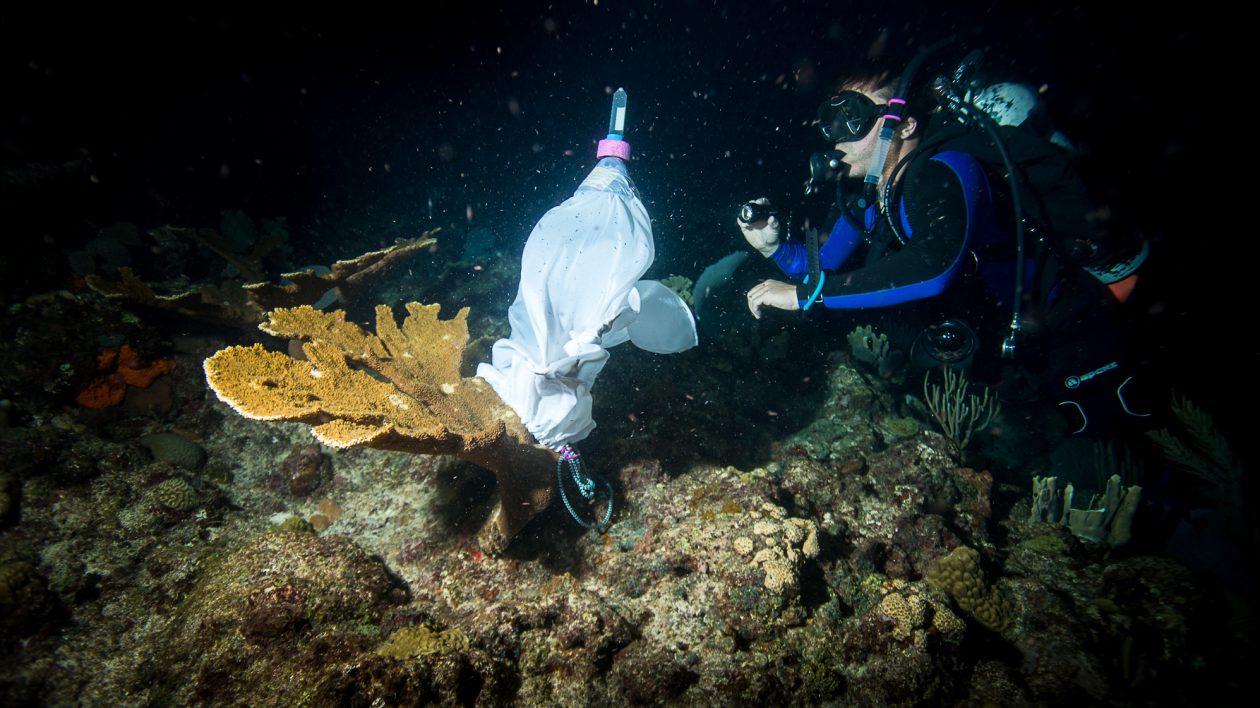
In addition to outplanting lab-and-nursery-produced corals, managers are restoring and saving corals by protecting habitat. “The Bahamas is leading the way to establish new Marine Protected Areas (MPAs) in the region,” says Frederick Arnett, TNC Bahamas Conservation Practitioner. “The country is a member of the Caribbean Challenge Initiative [an agreement among Caribbean governments and business leaders to protect and restore the marine and coastal environment]. In 2008, The Bahamas agreed to protect 20 percent of its nearshore marine environment. Currently it’s at ten percent. This year TNC, Bahamas National Trust, Bahamas Reef Environment Educational Foundation and other conservation partners submitted a plan to the government to reach the additional 10 percent through the declaration of 43 new MPAs.”
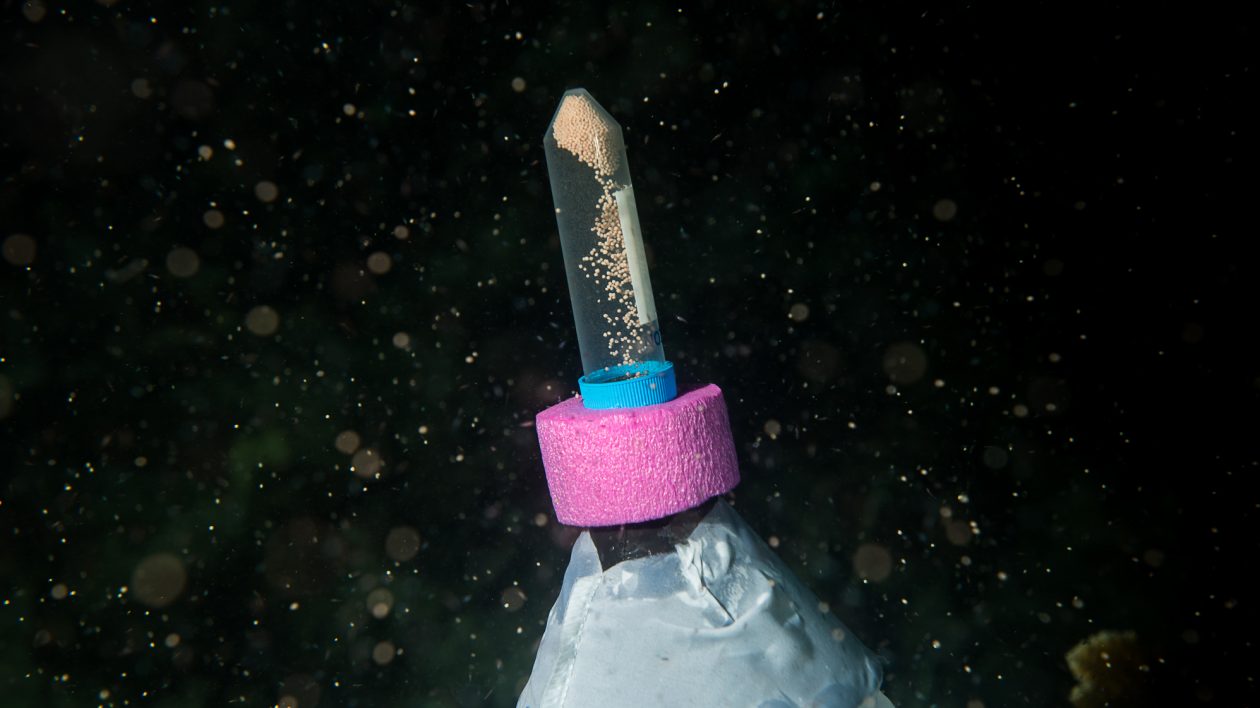
Mapping the Reef
Rebuilding coral reefs as fast as they’re dying now seems possible. But that can’t happen without an accurate baseline detailing what’s left. “To that end,” says TNC’s Solórzano, “we’ve partnered with the Carnegie Institution for Science and with Planet [a satellite remote-sensing company] for the first-ever high-resolution map of coral reefs in the Caribbean. That’s super important because you cannot make plans to protect something you cannot measure.” Aerial images will be collected by satellites, drones and a specialized aircraft called the Carnegie Airborne Observatory.
The sudden optimism among coral managers is palpable. Maybe Mote Lab intern, Lindsay Arick expresses it best: “[Vaughan] has seen the decline more than any of us. He saw coral when it was beautiful. I may see it when I’m Dr. Vaughan’s age the way he saw it when he was my age. So we’re going to switch the generations, and I can finally see maybe what reefs looked like 60 years ago.”




Good news from Australia:
https://www.nbcnews.com/mach/science/undersea-robot-just-delivered-100-000-baby-corals-great-barrier-ncna950821?fbclid=IwAR0JXbtOwOjogz-tispZxDoTWpM04RXjzlx3dh-8UDAjAeZiStBH47h06ik
More good news for coral:
https://www.islandconservation.org/science-spoken-restoring-islands-helps-save-coral-reef-biodiversity/?fbclid=IwAR1onxHI4t9u1JB2bhbQ3c6d0aQN6Kq3iUMkno8CmDMXb0UA6P7hszkQGyg
Wow! This is the best news about the oceans I’ve heard in a long, long time. Thanks for sharing.
I hope that the coral continue to grow and thrive. Leave it to Mother Nature to find a solution to man made problems and do so elegantly. Imagine what a tremendously positive impact this will have! Natural beauty where one stood a desolate underwater waste land.
New hope “fragments of opportunity” what a find for the worlds reef fishery. Excellent article that I will share with my friends in conservation.
This makes me so happy! ☺️